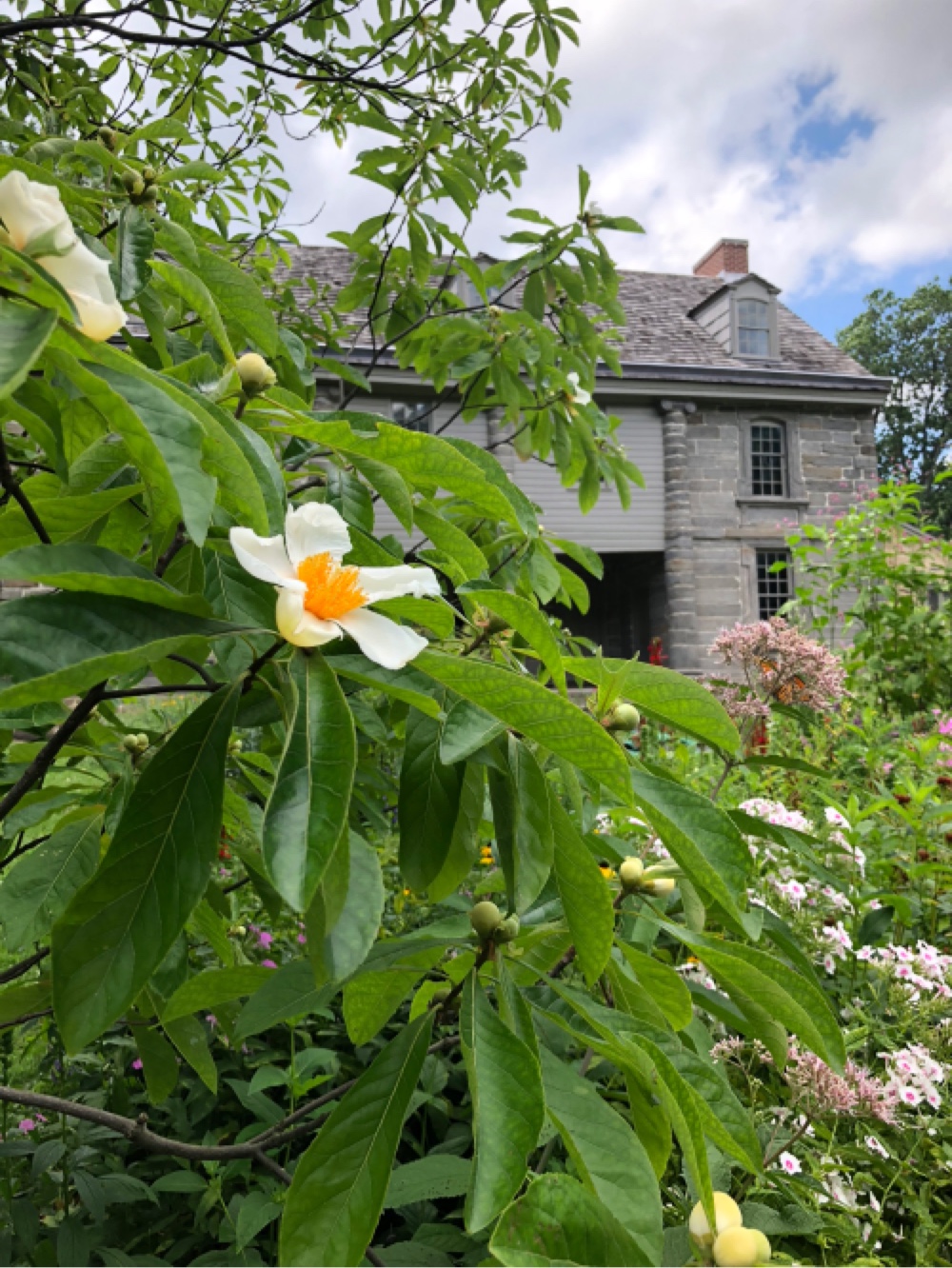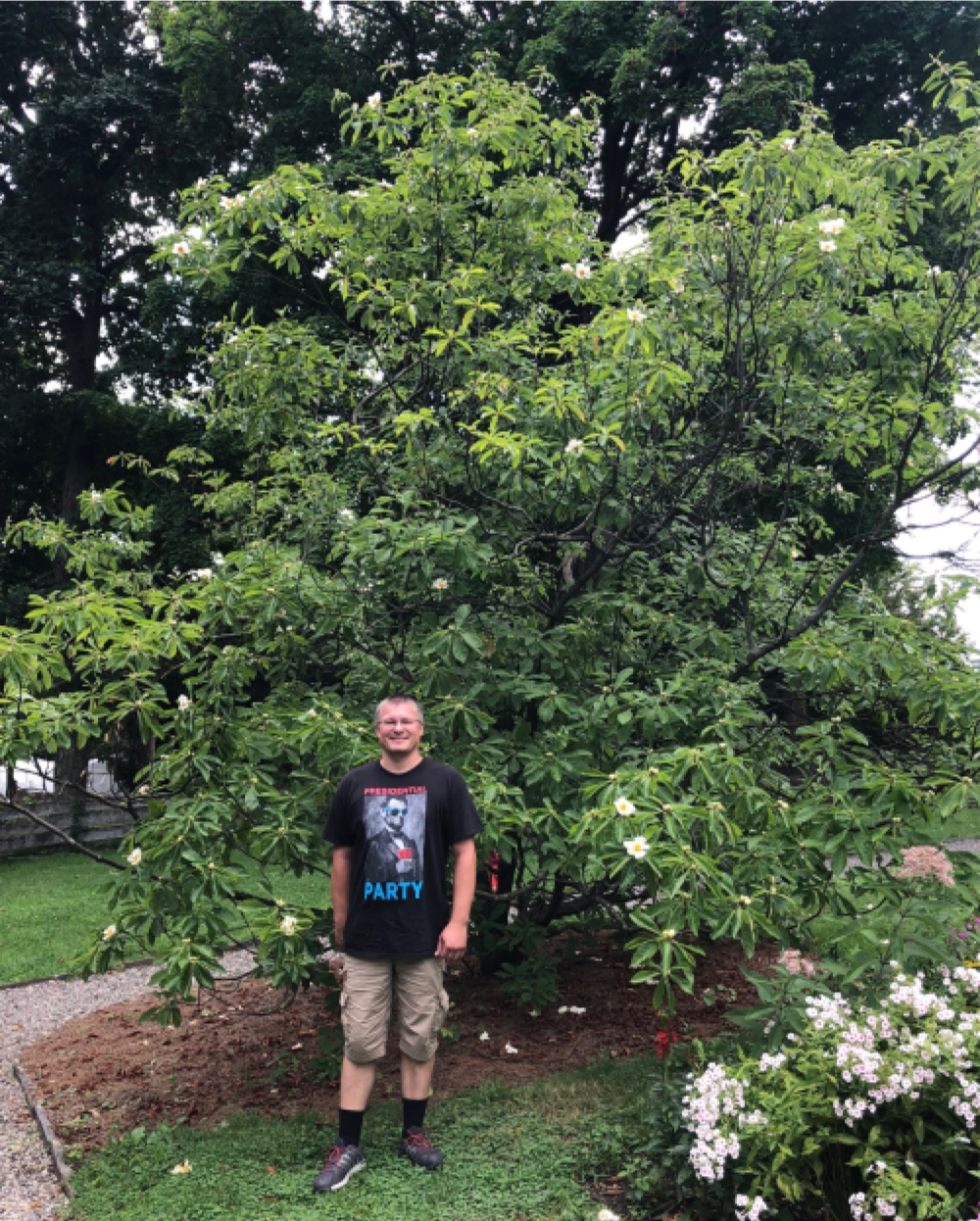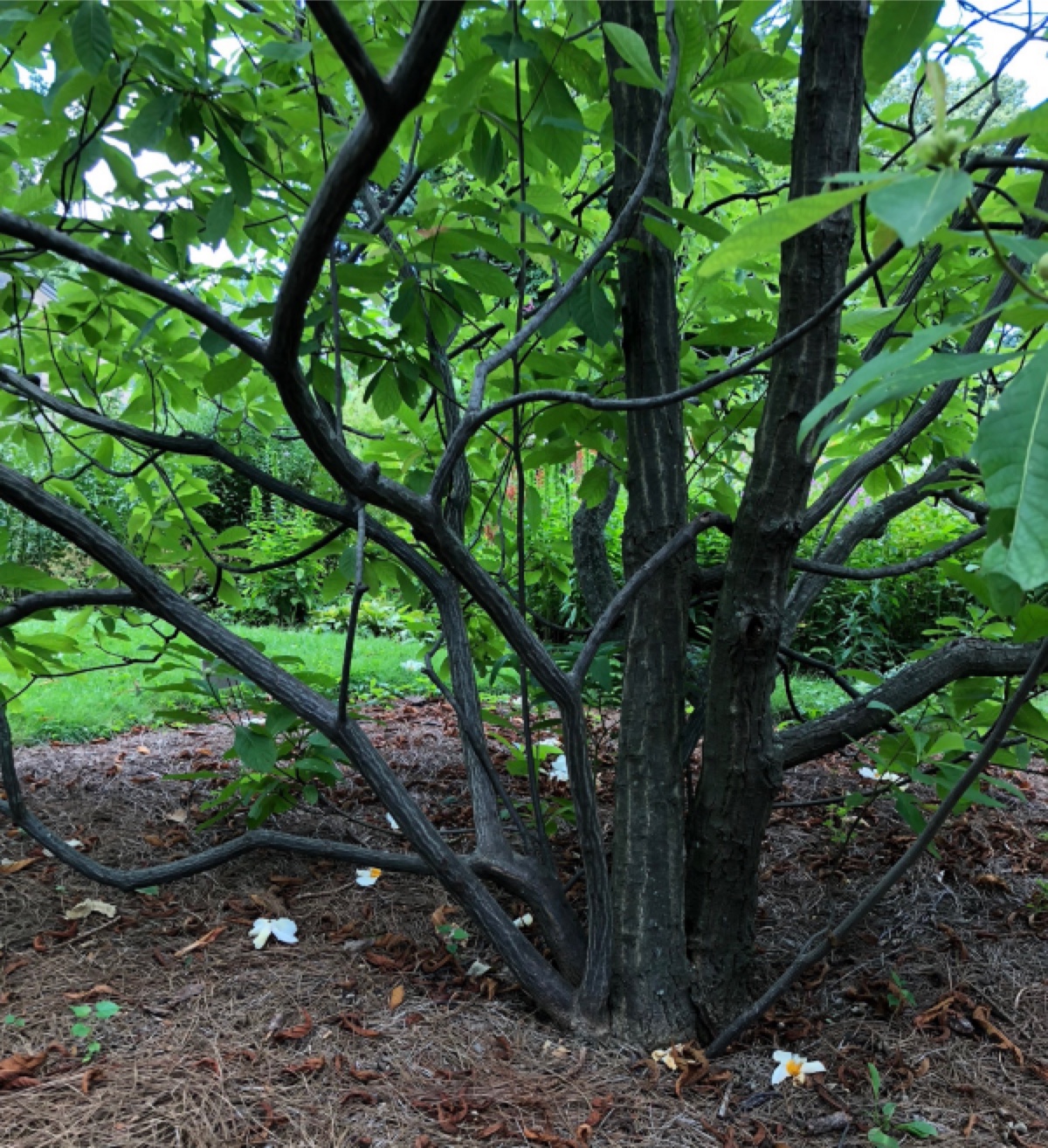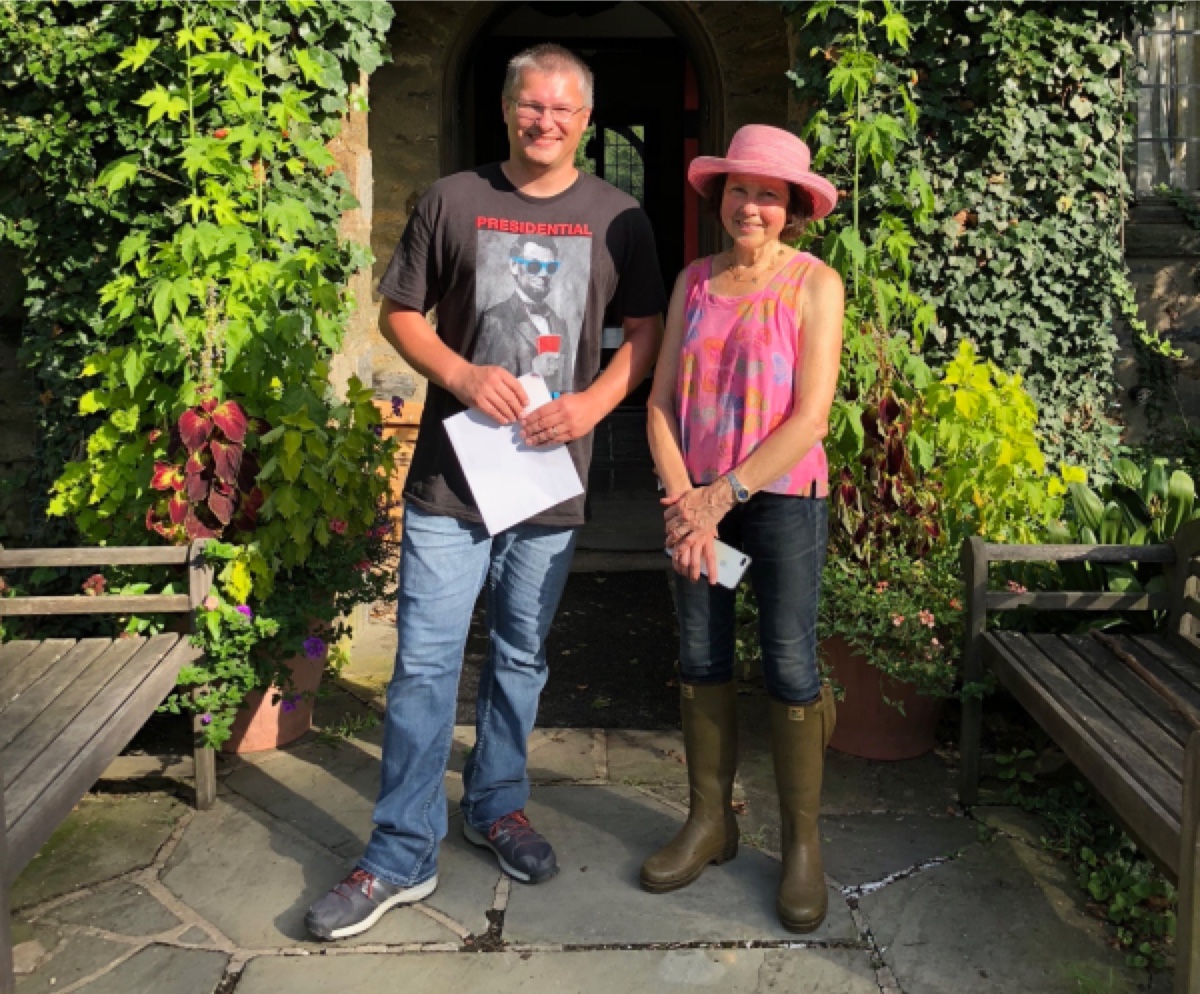BACKGROUND: The pair of Torreya trees are among the 50 acres of plantings on the grounds of the The Henry Foundation for Botanical Research. Founded in 1948 by botanist and plant explorer Mary Gibson Henry (1884-1967), the site still showcases the plants she collected on her expeditions through remote areas of the West, Midwest, and Southeast.
The two torreyas on the grounds have been surviving in Pennsylvania since Mary Henry planted them in the 1940s to 1950s. One is believed to have been grown from seeds and the other was brought in as a seedling.
The purpose of my visit was to take photographs and measure the circumference of both trees, so I could share the information with fellow members of Torreya Guardians. I believe these trees are significant examples of how well Florida Torreya can grow in northern climates and thrive near the foothills of the Appalachian Mountains.
Editor's note: AUGUST 2018 Michigan Torreya Planter Paul Camire visited the two mature Torreya taxifolia trees in Gladwyne, PA. Gladwyne is in the northwestern surrounds of Philadelphia. PHOTOS below by Paul Camire.
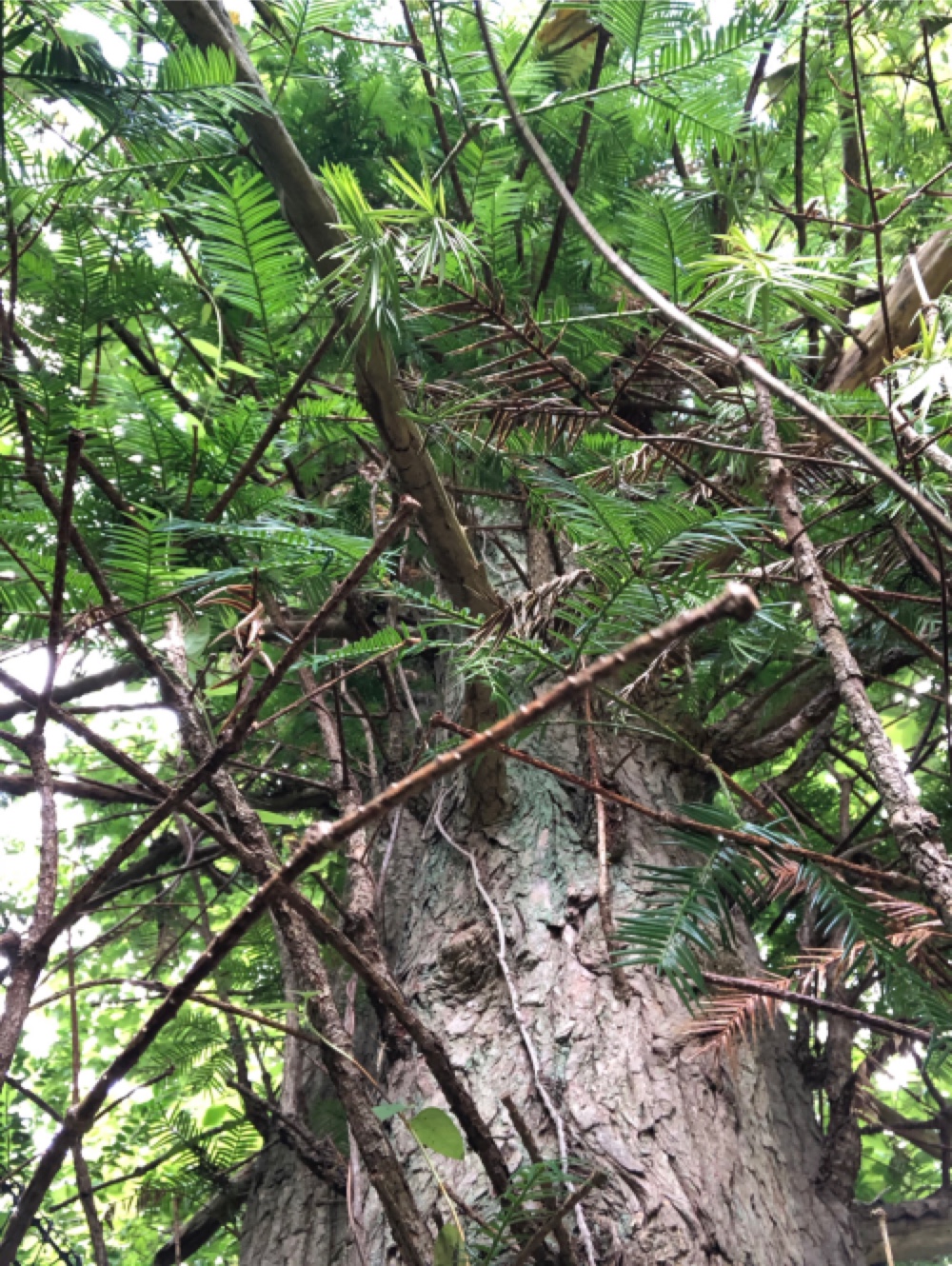 |
I was led on a hike to the trees by Director Susan Treadway, who is a granddaughter of Mary Henry, the explorer and planter of the Torreya trees there. The two Torreyas are located on a southeastern-facing slope, partially shaded and protected by trees on their northern side. I measured the circumference of each trunk (both have multiple trunks).
Above: Paul Camire and Susan Treadway |
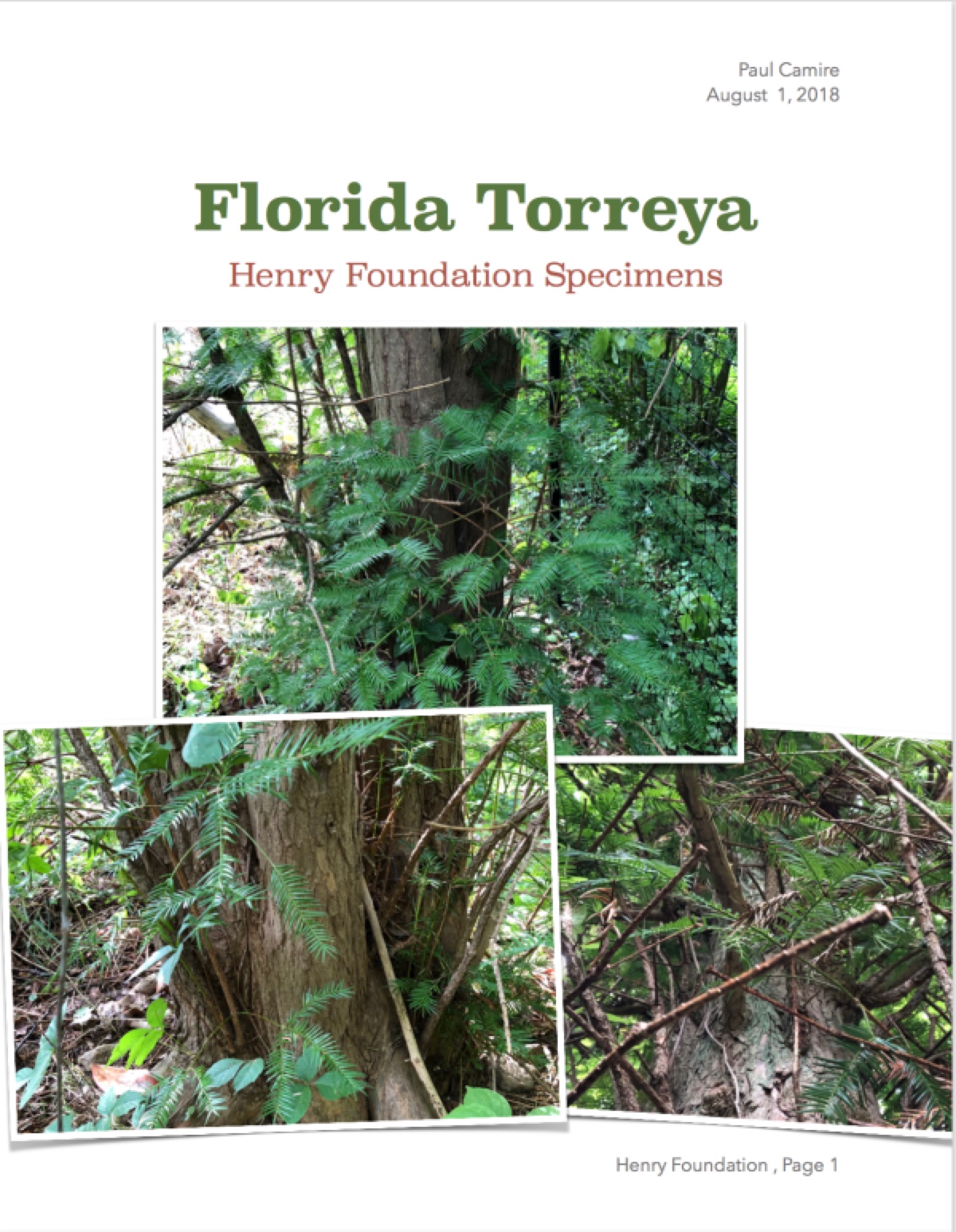 |
EXCERPTS from report prepared by Paul Camire for Susan Treadway:
On Wednesday, August 1, 2018, I had the great pleasure of visiting the Henry Foundation in Gladwyne, Pennsylvania. I met with Susan Treadway, Director of the Foundation, and despite the hot and humid weather we hiked out to reach a relict of the Jurassic and survivor of the Ice Age. |
(photos are above left and the next three below)
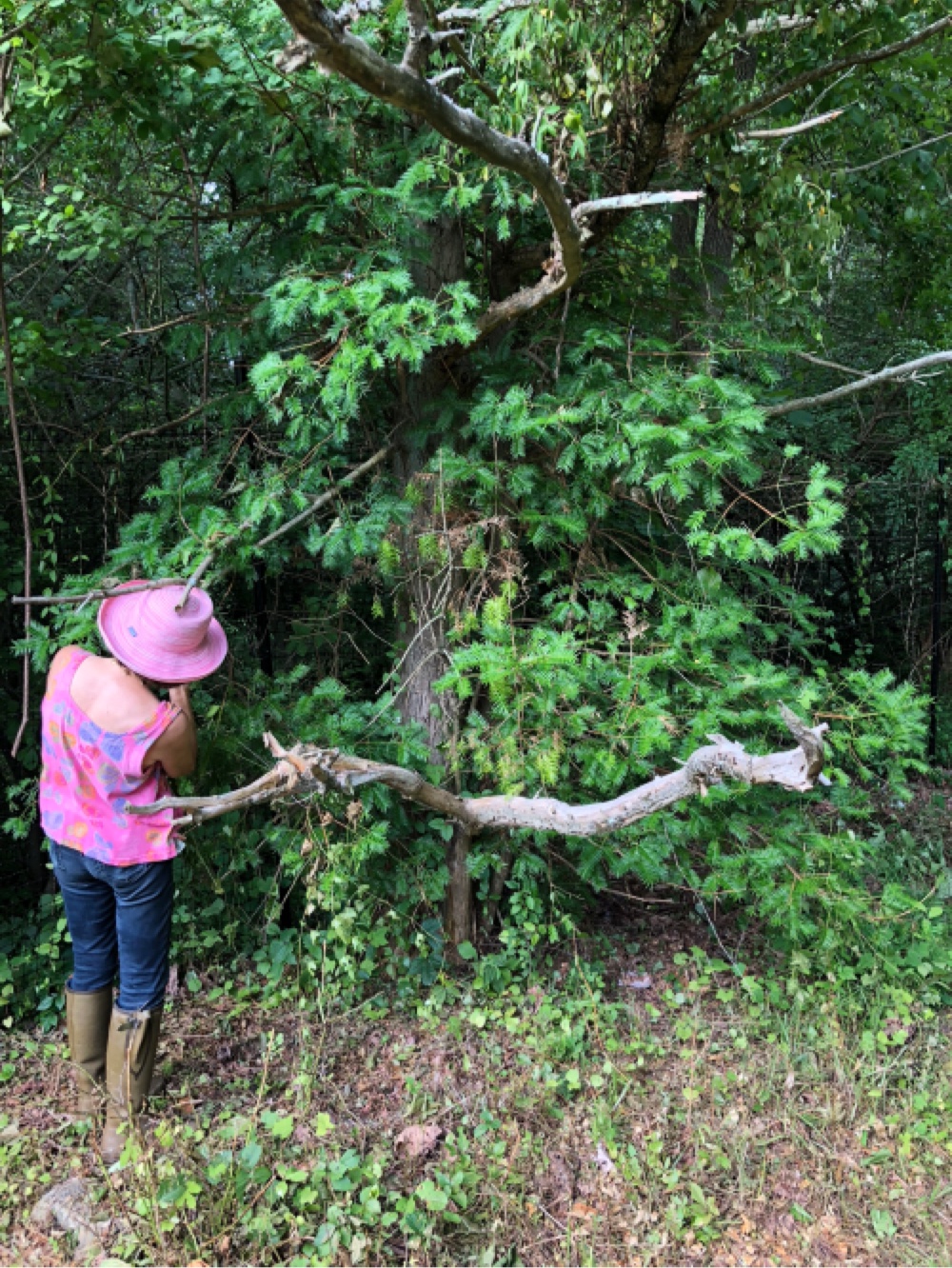 |
TREE #873, with trunk circumference of 32 inches, is the younger tree. It is upslope of TREE #804. I estimate this tree to be 40 feet tall. This is the Pennsylvania State Champion Florida Torreya. It has put on 2" of circumference growth since measured in 2008. Several large limbs had died back, due to extended periods of drought. Mrs. Treadway told me that there have been several long droughts in the area during the previous couple of years (the 2017 drought lasted 3 months). Most of the large limbs that were reaching out toward the sunlight had died back. But all along the sunny side of the trunk are vigorous, leafy branches growing out, in addition to basal sprouts. I believe the reason I couldn't find any reproductive structures on either of the two trees is because the trees have aborted them in favor of putting on a rush of foliage growth as a survival mechanism to overcome the droughts. I told Mrs. Treadway to look for reproductive structures in the future and to be advised that Torreya trees have been known to change sexes or become monoecious after being stressed. I also advised her to not trim the basal sprouts as they are the tree's insurance policy if anything happens to the trunks. Specimen 873 was planted here sometime between the late 40s and early 50s. |
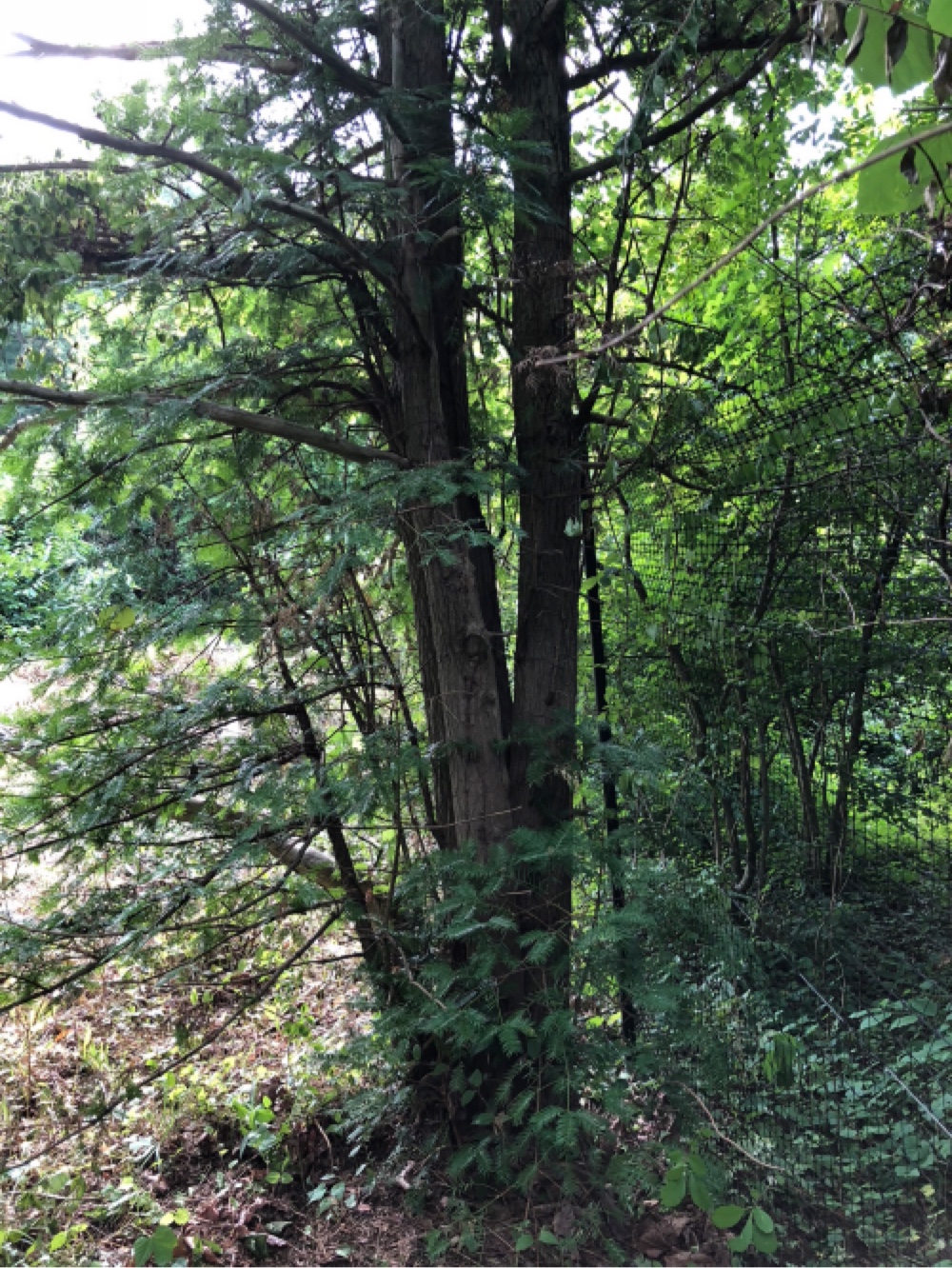
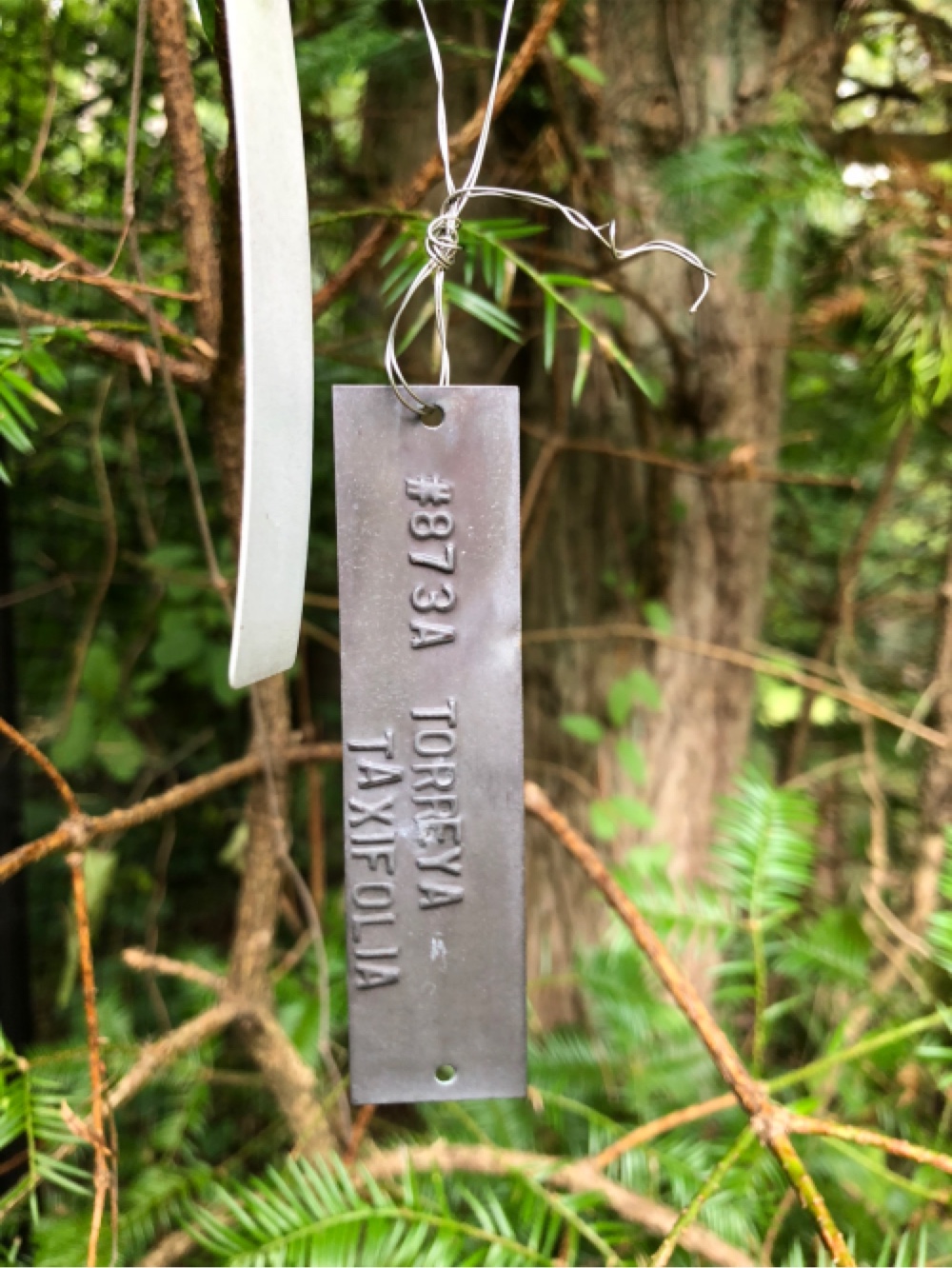

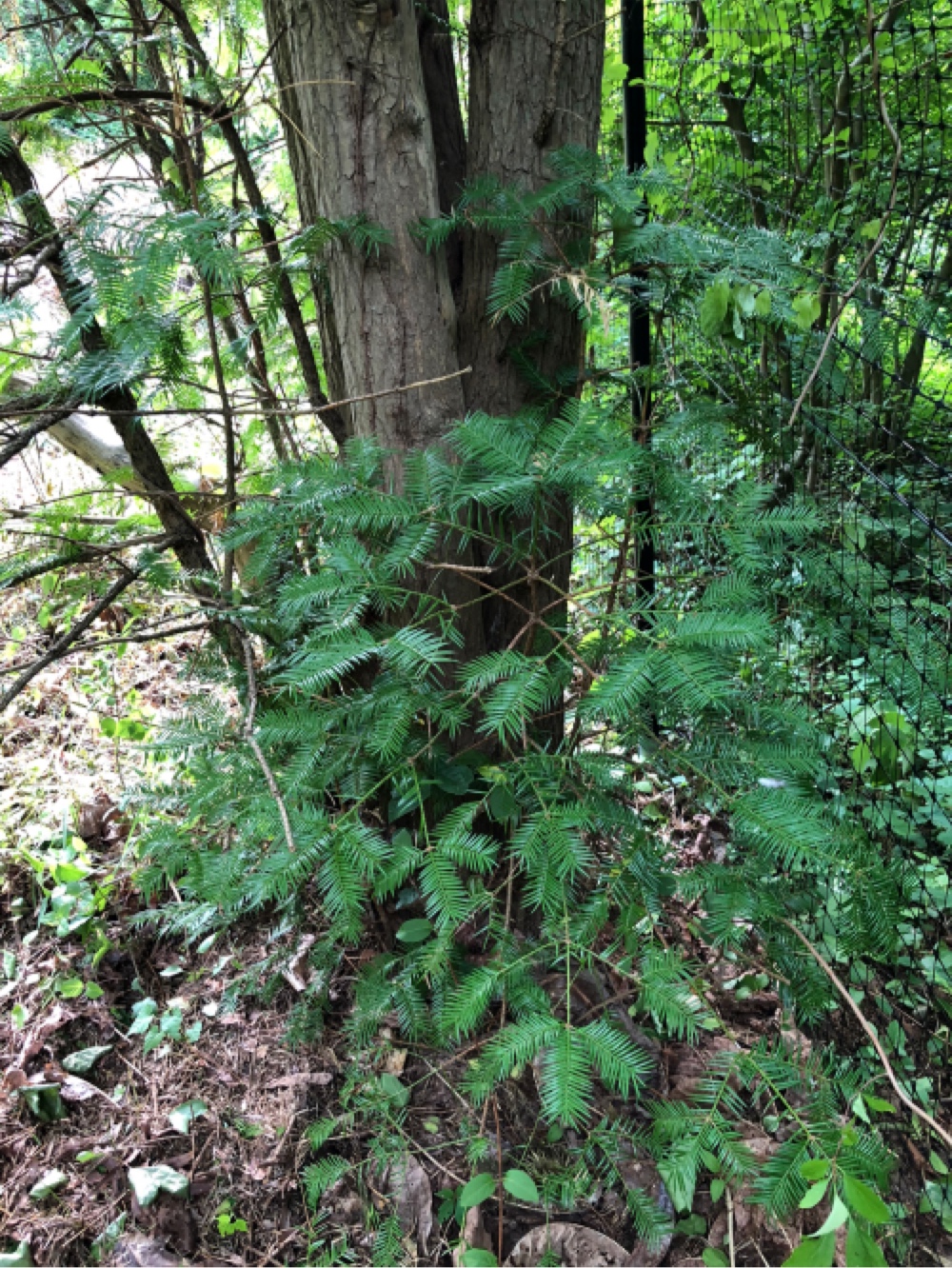
SPECIMEN 804: Circumference of largest trunk = 23 inches
(photos are the next three below)
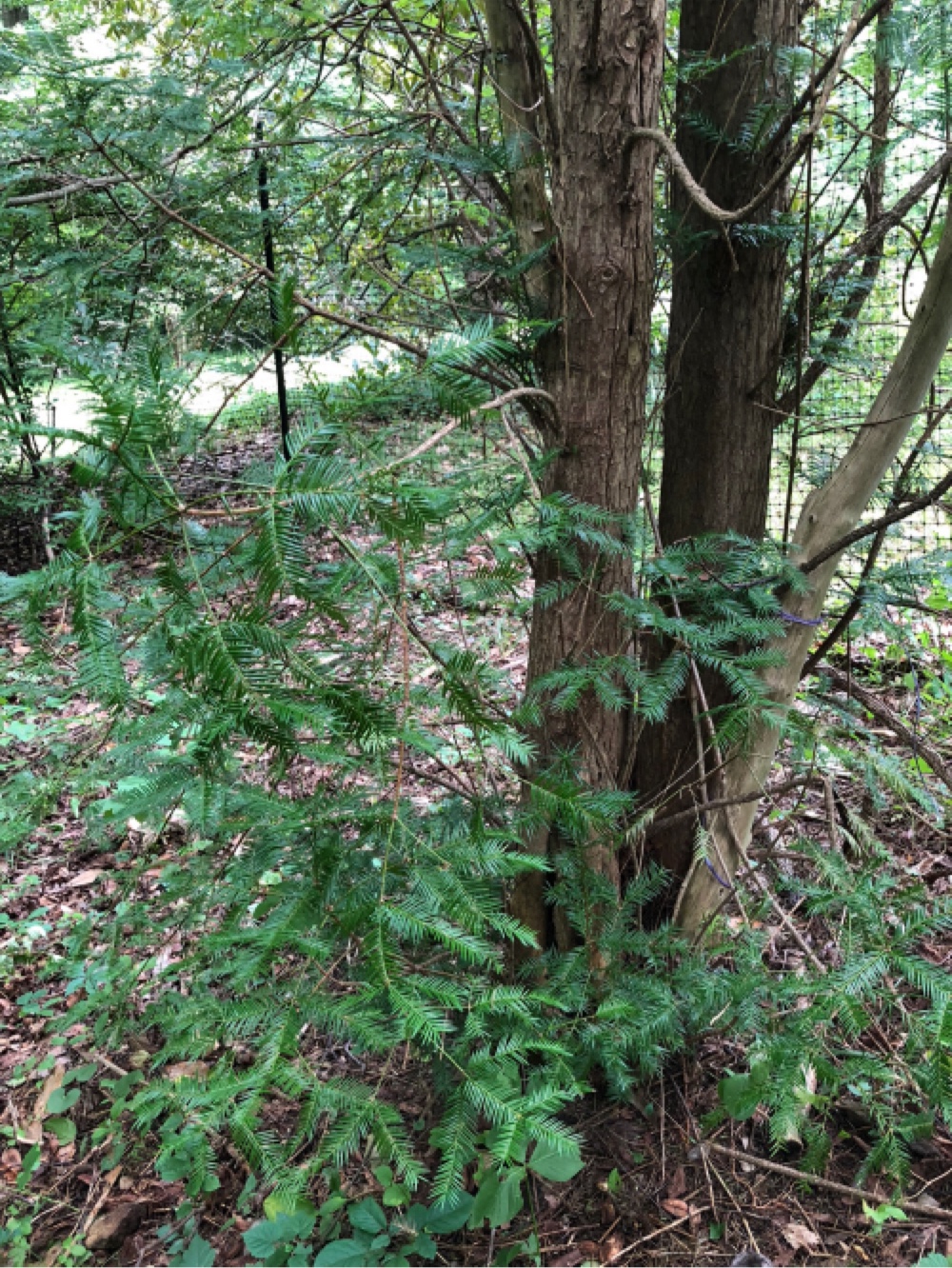
| TREE #804: Trunk circumference: 23". (I measured the next-largest trunk on this tree at 19 1/2 inches.) This is the older tree (brought to the garden in the 1940s). It is about 30 feet downslope from the other tree. There is vigorous growth along the sunny side of the trunk. The shaded side (north) has multiple trunks, one of which is dead. I estimate this tree to be about 35 feet tall. A large umbrella magnolia is growing just to the south, so there is partial shade.
|
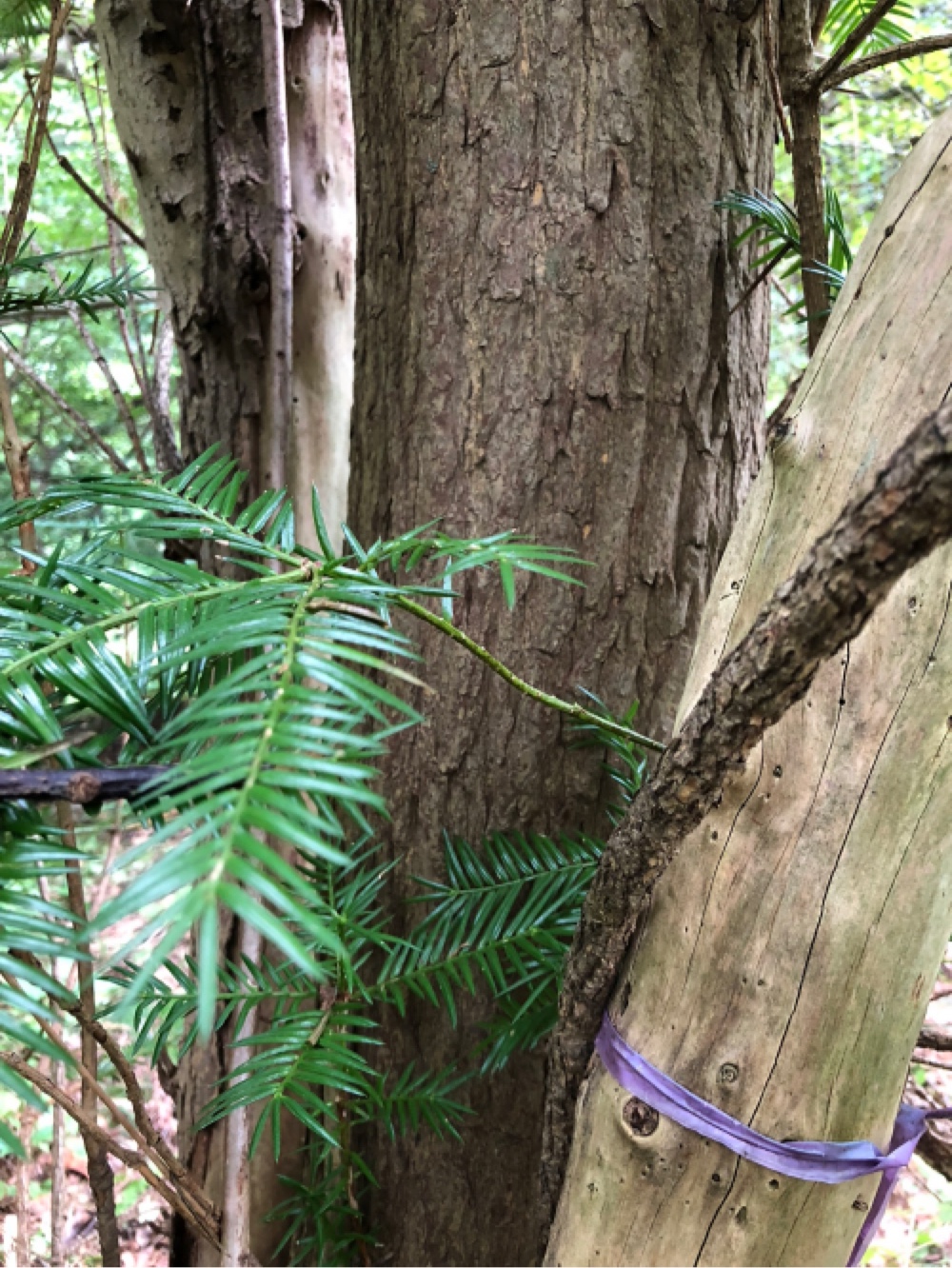
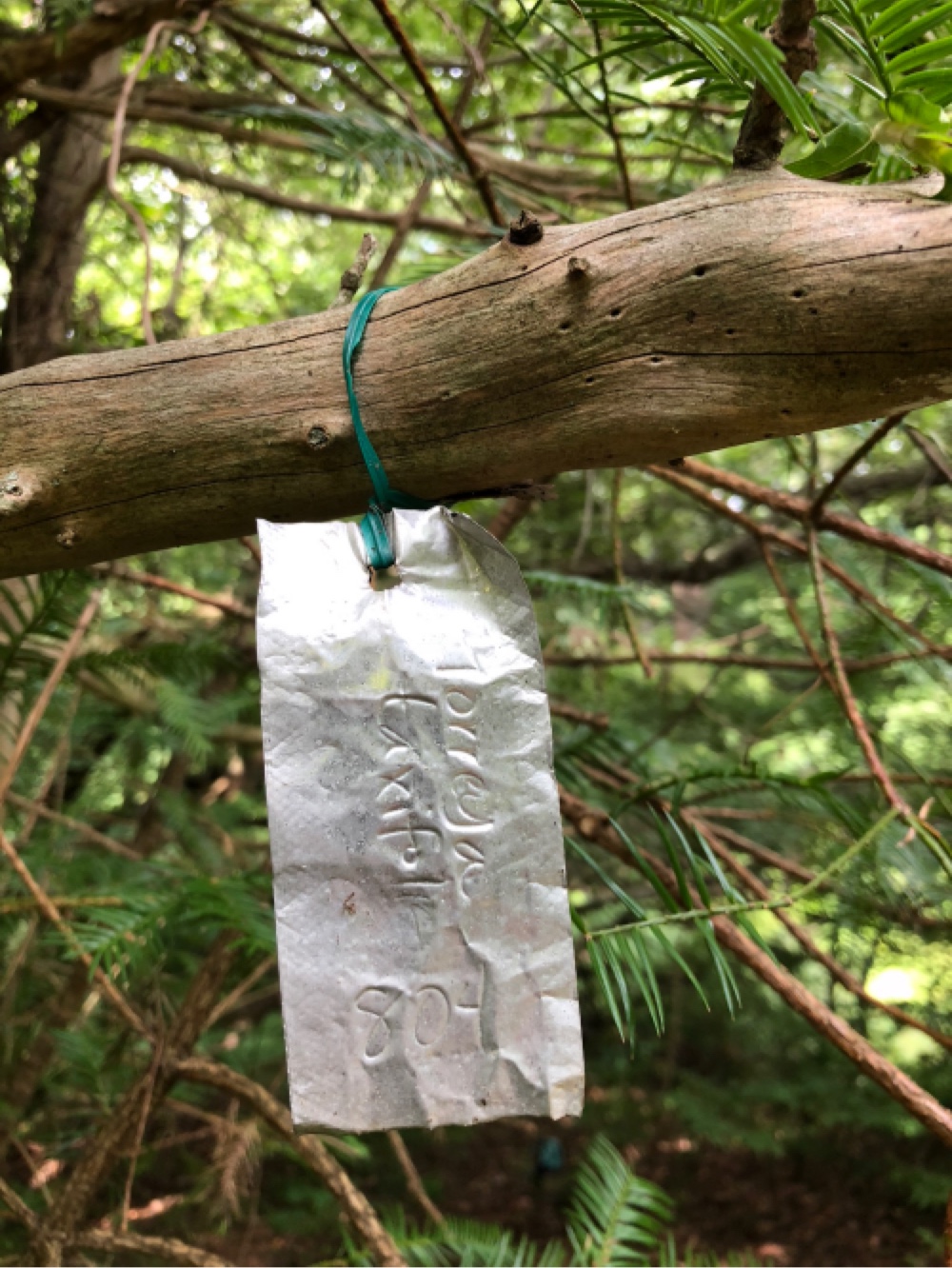
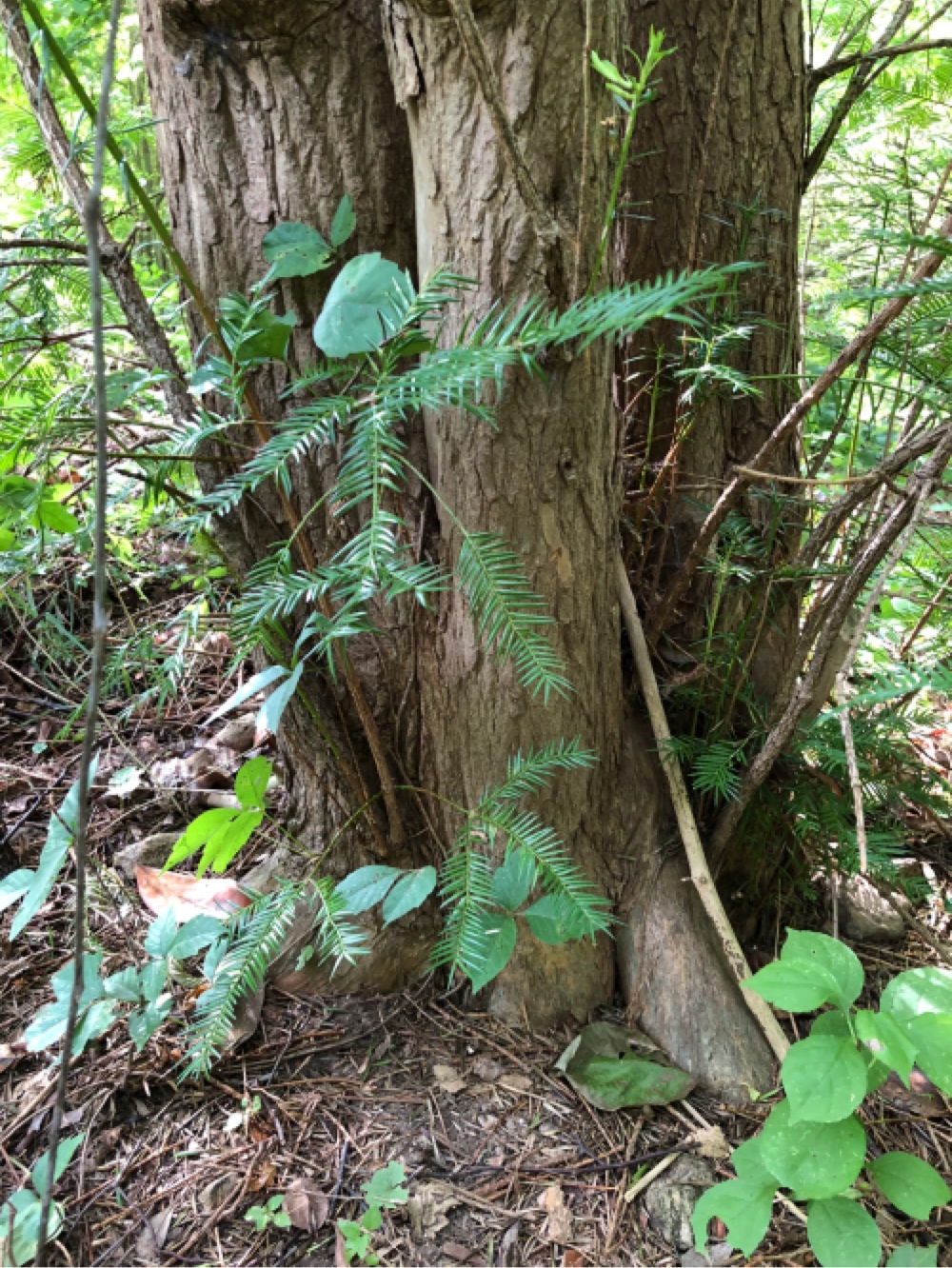
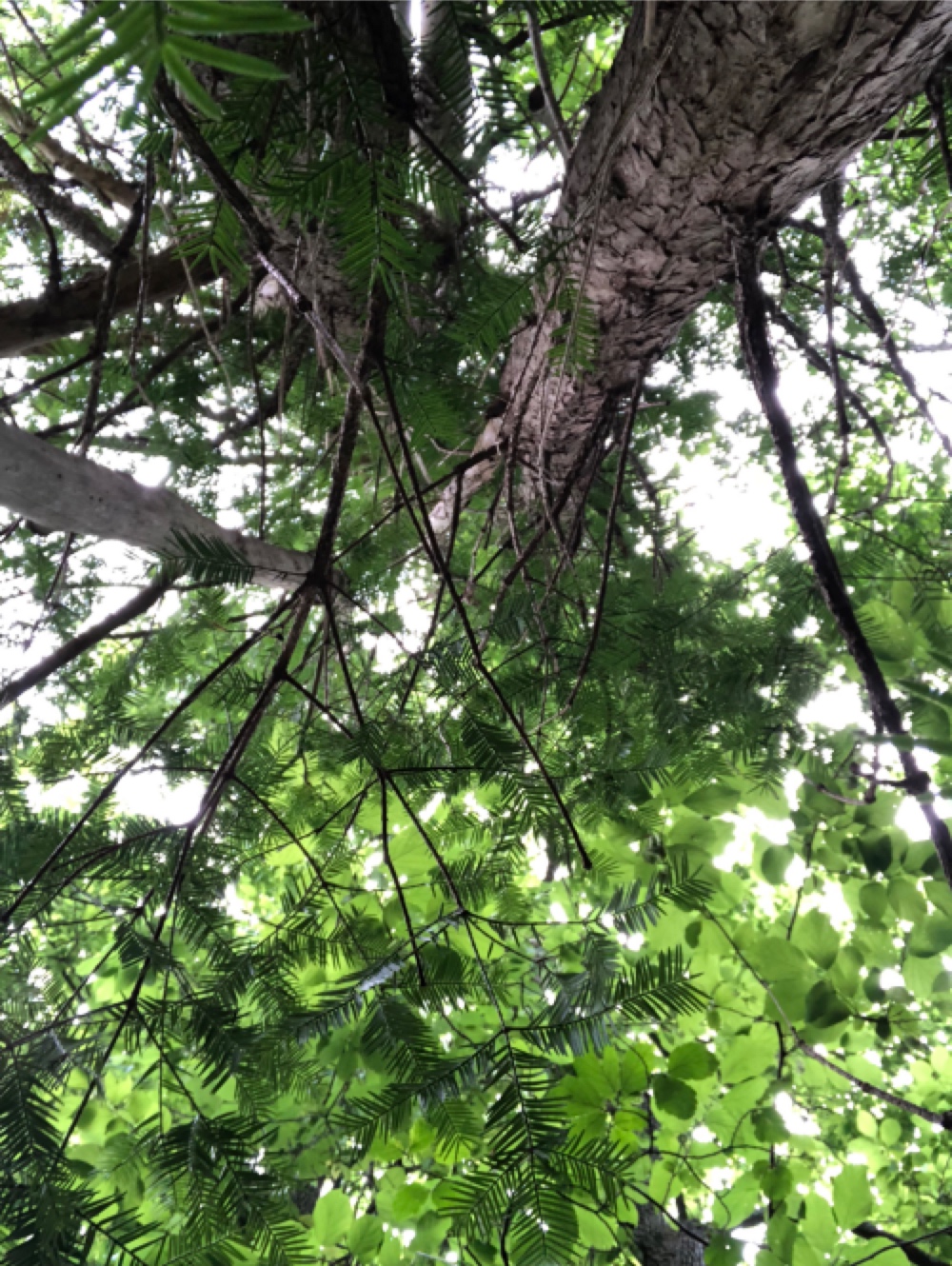
ADDITIONAL INFORMATION ON THE PAIR OF TORREYA TREES
The Henry Foundation is also getting ready to GPS mark all of their specimens later this summer.
Cuttings from these trees were collected by Bob McCarthy for Woodlanders Nursery in the 1980s and 90s.
Susan also researched Torreya records in Mary Henry's documents. Records indicate that in November 1939 Mary Henry explored near Rock Bluff in Liberty County FL, where she found a 20-foot tall Torreya. She explored this same area again in April 1940 and noted Torreyas. In April 1941 she explored 6 miles south of Torreya State Park and noted that torreyas were scarce — and none were taller than 3-4 feet.
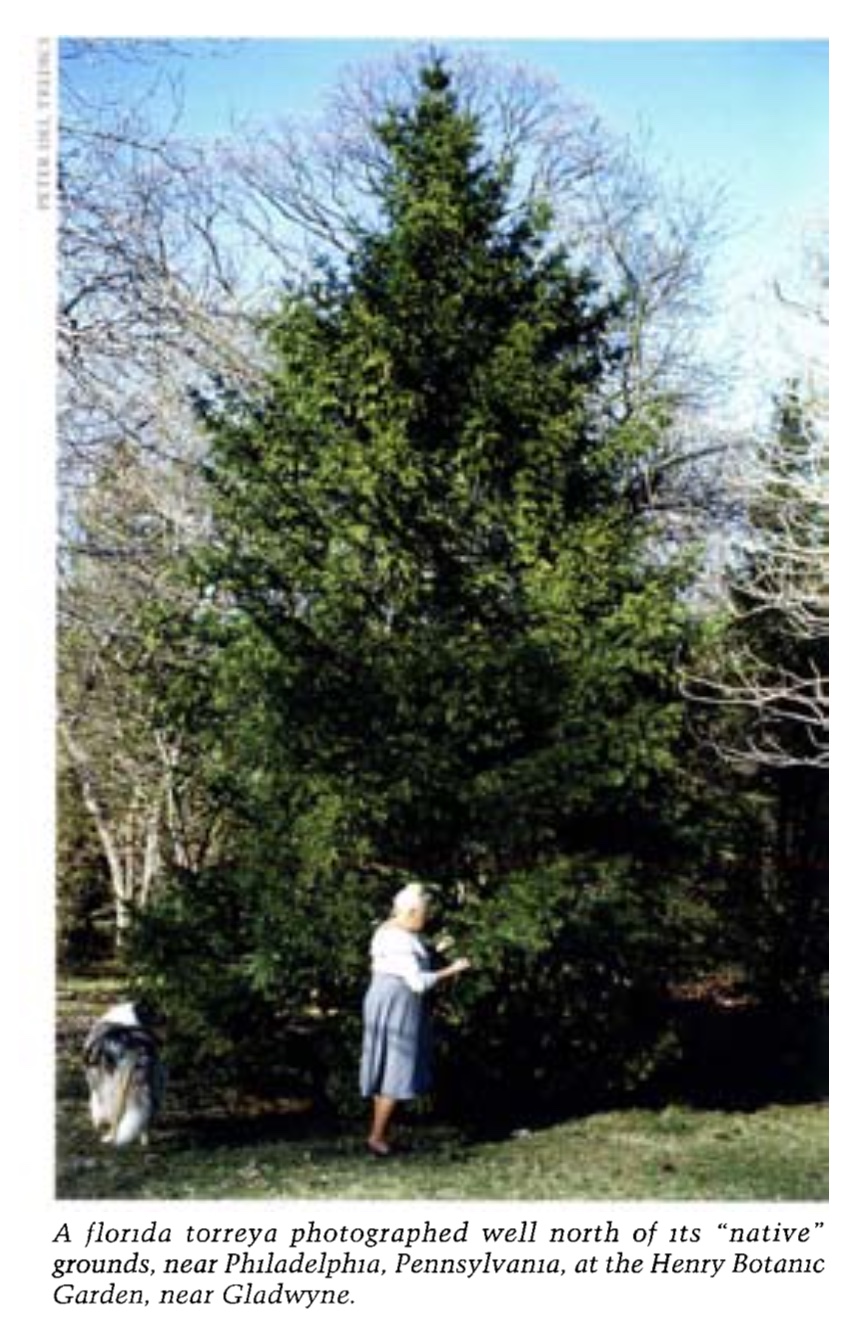 |
I was given a chance to read several correspondences from the archive, regarding Torreya. Mary Henry had requested seeds from a female Torreya growing on the Tallahassee Capitol grounds. So it is probable that one of the two trees came from that lot of seeds. Records also indicate that in 1939, seeds were given to Mary Henry by Mr. N. Gibson of Torreya State Park. In November of 1954, Frank Woods of the Forestry Experimental Station gave permission for her to dig up one Torreya taxifolia. POINT OF INTEREST: It turns out that Susan and I know some of the same people. Of particular note is Jack Johnston, whom Susan knows through the Magnolia Society. Overall, Mary Henry was quite the explorer. She even has a mountain named after her in British Columbia. An 11-page biography in Arnoldia, "Mary Gibson Henry, Plantswoman Extraordinaire", highlights the rugged expeditions she made into uncharted northern British Columbia. The biography summarizes: "Her years of devotion to horticulture had produced many solid achievements: over a hundred articles had been published in iournals such as Herbertia, Bartonia, and National Horticultural Magazine; herbaria in Scotland and North America had received thousands of specimen sheets from her collections; the hardiness of plants previously thought too tender for Philadelphia had been demonstrated ..."PHOTO LEFT: "Anachronistic Fruits and the Ghosts Who Haunt Them", by Connie Barlow, 2001, Arnoldia, page 20. (Photo sourced by Peter del Tredici.) Also available on Researchgate. |
VISIT TO FRANKLINIA AT BARTRAM GARDEN
